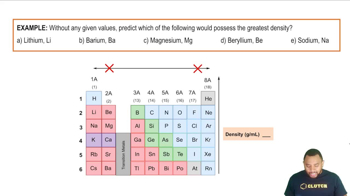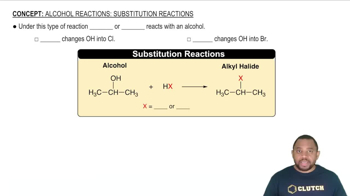Here are the essential concepts you must grasp in order to answer the question correctly.
Doping in Semiconductors
Doping is the intentional introduction of impurities into a semiconductor to modify its electrical properties. In n-type semiconductors, elements with more valence electrons than the semiconductor material are added, providing extra electrons that enhance conductivity. For gallium arsenide (GaAs), which has three valence electrons from Ga and five from As, n-type doping typically involves elements from group V of the periodic table.
Recommended video:
Group V Elements
Group V elements, such as phosphorus (P) and arsenic (As), have five valence electrons and are commonly used to create n-type semiconductors. When these elements replace gallium (Ga) in GaAs, they contribute an extra electron, increasing the material's electron concentration and enhancing its conductivity. Understanding the role of these elements is crucial for selecting appropriate dopants.
Recommended video:
Main Group Elements: Density Example
Element Substitution in GaAs
When substituting elements in GaAs for doping purposes, it is essential to choose elements that can effectively replace gallium while providing the desired electrical properties. Among the options given, indium (In) is a group III element like gallium, but it does not provide extra electrons. In contrast, silicon (Si) is a group IV element that can act as a donor in certain conditions, but it is less effective than group V elements for n-type doping in GaAs.
Recommended video:
Alcohol Reactions: Substitution Reactions




